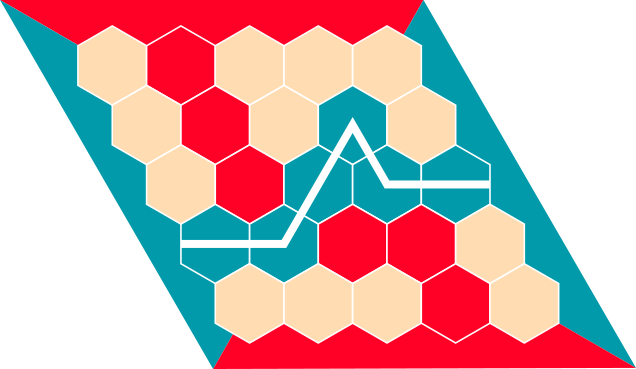Introduction
#Introduction HexHex is a strategy board game played on a hexagonal grid, theoretically of any size and several possible shapes, but traditionally as an 11×11 rhombus. Other popular dimensions are 13×13 and 19×19 as a result of the game's relationship to the older game of Go. According to the book A Beautiful Mind, John Nash (one of the game's inventors) advocated 14×14 as the optimal size.

Game Rules
#Game Rules EachEach player has an allocated color, conventionally Red and Blue or White and Black. Players take turns placing a stone of their color on a single cell within the overall playing board. The goal for each player is to form a connected path of their own stones linking the opposing sides of the board marked by their colors, before their opponent connects his or her sides in a similar fashion. The first player to complete his or her connection wins the game. The four corner hexagons each belong to both adjacent sides.
#Coding Rules
Coding Rules
- You may use any program or language. Do not use any third party libraries or modules (full or in part) that implements the same game. The rest are fine.
- Players are computer and user.
- You may choose the size of the grid.
- You may use either CLI or GUI for output (see points).
- Your code should not exceed 5120 bytes.
#Points
Points
- +(5120 - bytes) / 100 golfing points
- +50 points for making GUI
- +50 for two player mode
- +75 for best-move-prediction#
- +50 for undo-move
# Tell the user, if they wish, their next best move.
#Super bot challenge
Super bot challenge
- +150 points if your bot is undefeatable. Add this points ONLY IF you are absolutely certain of your bot's 100% winning capability. If any user defeats your bot and reports it all your points will be taken away (zero points). The person reporting this must either post a screenshot or input sequences based on the implementation of game. They will be awarded +150 points, if they have posted an answer.
